The Mohs scale: Understanding gemstone hardness
Posted on: 12/08/2025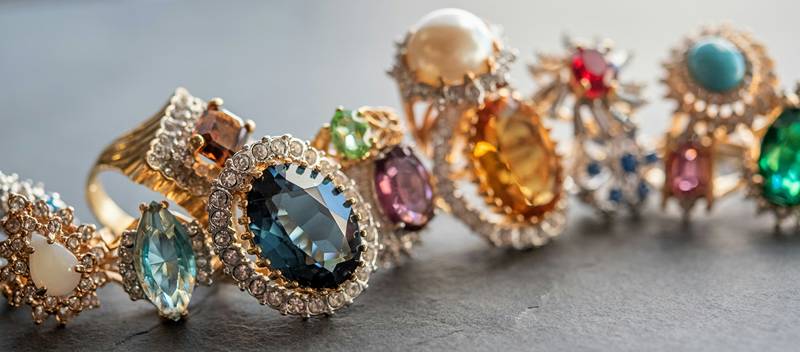
When choosing a piece of jewellery, it’s easy to be captivated by the sparkle of a diamond, the rich green of an emerald, or the iridescent shimmer of a pearl. But beyond their beauty, one key factor that is often overlooked is gemstone hardness, a property that directly impacts how well a stone will stand up to everyday wear.
Whether you’re selecting an engagement ring, a statement necklace, or a pair of earrings, understanding where a gemstone piece falls on the Mohs hardness scale can make a significant difference to how you care for your jewellery, as well as how long it lasts. But what exactly is the Mohs scale, and where do your favourite gemstones rank?
In this guide, we’ll break down everything you need to know about the Mohs scale of hardness, from the hardest gemstones to tips on caring for softer stones to keep them shining brilliantly for years to come. We’ll cover:
● What is the Mohs scale?
●
Where different minerals fall on the Mohs hardness
scale
●
Where gemstones fall on the Mohs scale of hardness
○
Diamond hardness
○
Emerald hardness
○
Sapphire hardness
○
Ruby hardness
○
Amethyst hardness
○
Topaz hardness
○
Aquamarine hardness
○
Garnet hardness
○
Tanzanite hardness
○
Opal hardness
○
Pearl hardness
●
Can you scratch a diamond?
●
What is harder than diamond?
● Choosing the best stone for engagement rings
What is the Mohs scale?
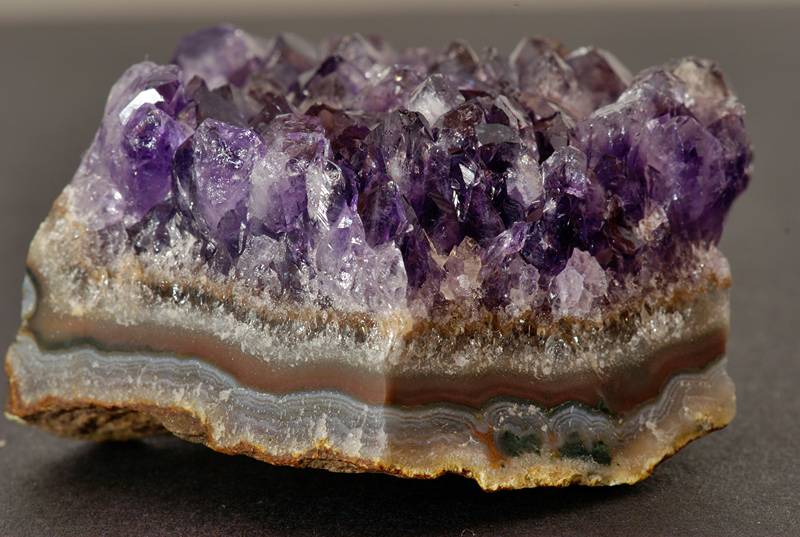
The Mohs scale, also known as the Mohs hardness scale, is a tool used to measure the scratch resistance of minerals, including gemstones. Developed in 1812 by German mineralogist Friedrich Mohs, the scale ranks minerals from 1 (the softest) to 10 (the hardest) based on their ability to scratch or be scratched by other substances.
It’s a comparative scale, meaning a mineral can scratch any other mineral with a lower rating, and can be scratched by any mineral with a higher rating. Understanding where a gemstone falls on this scale helps jewellers and buyers assess its suitability for everyday wear, as well as the level of care it requires.
While it’s commonly used in gemology to compare gemstones like sapphires and rubies, the Mohs scale also includes non-gem minerals such as talc (used in baby powder) and gypsum (used in chalk).
Where different minerals fall on the Mohs hardness scale
The Mohs scale ranks minerals from softest to hardest on a scale of 1–10. Each level of hardness is represented by a specific mineral that can scratch those below it, but not the ones above.
Here’s a simplified breakdown of the Mohs scale, and where each mineral ranks:
- Talc: The softest mineral is used in products like baby
powder. It can be easily scratched with a fingernail.
- Gypsum: Slightly harder than talc but still very soft. It’s
used in chalk and plasterboard.
- Calcite: This mineral can be found in limestone and marble,
and is relatively easy to scratch with a copper coin.
- Fluorite: Known for its vibrant colours, this mineral glows
under UV light (it’s where the term ‘fluorescent’ comes from). Fluorite is
fairly soft and can be scratched easily with a knife blade.
- Apatite: This is found in bones and tooth enamel, and is also
used in fertiliser. Apatite can be scratched with a knife with some
difficulty.
- Orthoclase Feldspar: Found in granite and some types of
moonstone. This mineral is durable but still susceptible to some
scratching.
- Quartz: As one of the most abundant minerals on earth, quartz
is used in watches, electronics, and jewellery. Amethyst and citrine are both varieties
of quartz. It’s hard enough to scratch glass easily.
- Topaz: Another popular gem used in jewellery, topaz is known for its clarity and range
of colours. While it is very hard, it can be prone to chipping.
- Corundum: Corundum is the name for the category of gemstone
that includes both ruby and sapphire. This is one of the hardest
minerals, but it is still possible to scratch it.
- Diamond: The hardest known natural mineral. Diamonds are used in luxury jewellery as well as industrial drills. They are made of carbon and have a tightly bonded structure that’s virtually impossible to scratch, except with other diamonds.
Where gemstones fall on the Mohs scale of hardness
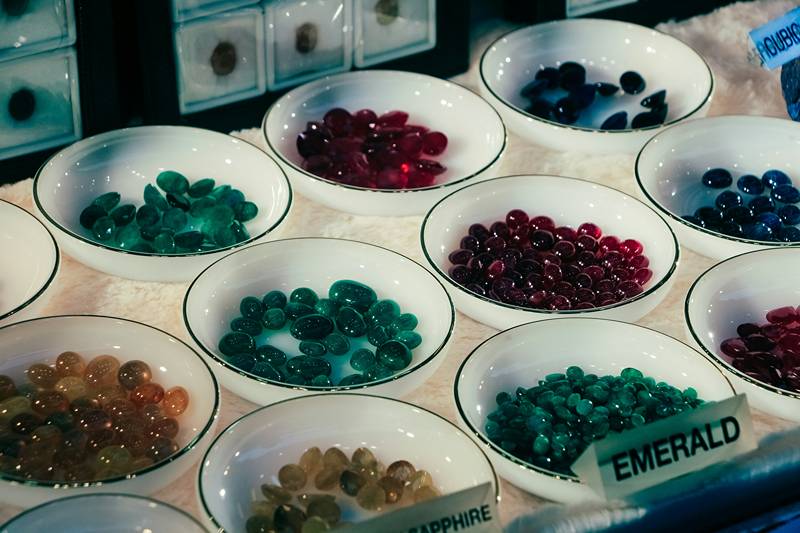
While the Mohs scale is used to rank all minerals by
their scratch resistance, it’s particularly valuable for jewellery lovers
looking to make a purchase. Whether you’re marking a milestone with a special gift
or are simply curious about your favourite stone, understanding the gemstone
hardness scale can help you select the right piece and understand how to care
for it.
Below is a breakdown of the most popular gems and where they fall on the Mohs hardness scale.
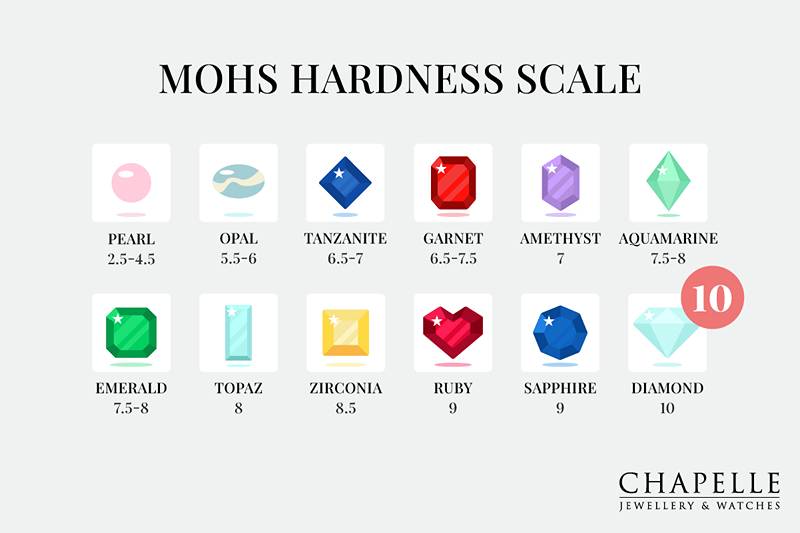
Diamond hardness
Diamond sits at a perfect 10 on the Mohs scale, making it the hardest of all gemstones. Alongside its brilliance and clarity, the stone’s exceptional hardness is one of the main reasons diamond engagement rings are so enduringly popular.
That said, while diamonds are extremely hard, they’re not indestructible. Although diamonds can’t be scratched by other materials, they can chip or fracture if struck at the right angle or with enough force. Diamonds can also scratch one another, so be sure to store them separately from all other jewellery to keep them looking their best.
Read our guide to understanding diamonds for tips on
cleaning and care to protect your stone for a lifetime.
Emerald hardness
On the Mohs scale, emerald falls between 7.5 and 8. While fairly
resistant to scratches, emeralds can be prone to internal fractures due to
their inclusions — the small fissures that are a natural part of their
structure. When choosing emerald rings, you may want to opt for a protected
setting, such as a band or wishbone ring with a channel setting.
Sapphire hardness
Made from the mineral corundum, sapphire ranks a 9 on the
Mohs scale, making it one of the most scratch-resistant gemstones after
diamond. Sapphire’s hardness makes it ideal for rings and other jewellery worn daily.
Available in a range of colours beyond classic blue, including pink, yellow,
and green, sapphires combine beauty with impressive durability.
Ruby hardness
Ruby, like sapphire, is a variety of corundum, which gives it an impressive Mohs hardness rating of 9. This exceptional durability makes ruby one of the hardest natural gemstones available. Rubies have been prized for centuries by cultures around the world, and are rich in symbolism. One of the many meanings of ruby is power and vitality.
Thanks to their vivid red colour and excellent toughness,
rubies make an great choice for rings, bracelets, and other pieces that see frequent
wear.
Amethyst hardness
Amethyst is a purple variety of quartz and ranks a 7 on the Mohs scale of hardness. That means that while it’s relatively resistant to scratches from most everyday materials, it can still be marked by harder substances like corundum. Amethyst is a stunning, versatile, and affordable gemstone, but it's best worn in protected settings to keep it in top condition. Try a pendant or ring with a bezel setting that encircles the stone, such as this heart necklace or this rubover set ring.
Topaz hardness
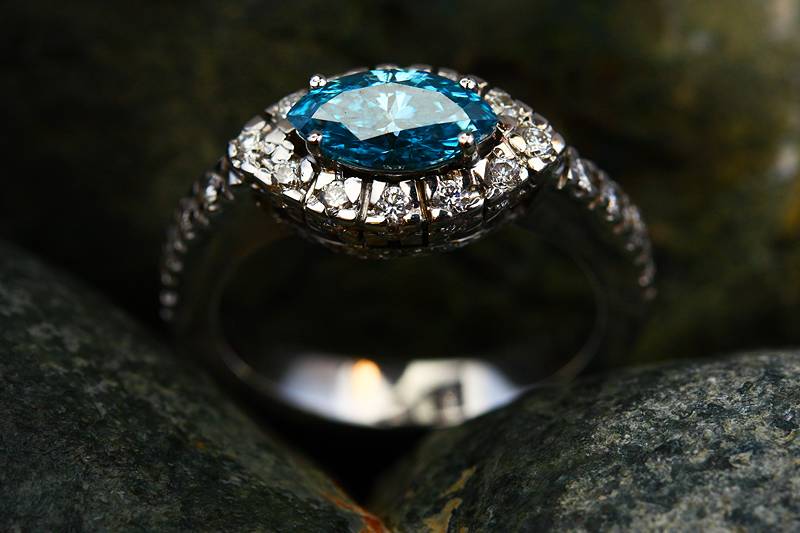
Ranking at 8 on the Mohs hardness scale, topaz is a relatively hard gemstone that offers good scratch resistance for everyday wear. It’s prized for its clarity and wide range of colours, from classic blue to rarer hues like red, pink, green, and orange. It’s a versatile stone that’s a popular choice for earrings, pendants, and statement rings.
However, despite its hardness, topaz features what is known as ‘perfect cleavage’, meaning it contains a high amount of cleavage planes across which a stone can be split. While this means the stone is easy for a gem cutter to shape, it also makes it vulnerable to chipping and splitting.
To protect your topaz jewellery, avoid sharp impacts and store
it separately from harder stones like diamond or sapphire, which could scratch
or damage its surface.
Aquamarine hardness
Alongside emerald and morganite, aquamarine is a member of the beryl mineral
family, meaning it ranks between 7.5 and 8 on the Mohs scale. Unlike emerald,
however, aquamarine lacks the internal inclusions that can make emeralds prone
to fracturing. This gives it better structural integrity, making it a durable
and dependable choice for both everyday jewellery and special occasion pieces.
Its signature pale, greenish-blue hue gives aquamarine its name, which is
derived from Latin and means ‘seawater’.
Garnet hardness
Rather than a single gemstone, garnets are a group of closely related minerals made up of silicates. While it’s best known for its deep red tones, garnet naturally occurs in nearly every colour, from vibrant greens and oranges to rare blues.
On the Mohs hardness scale, garnet typically falls between
6.5 and 7.5, depending on the variety. This gives it moderate durability,
suitable for many types of jewellery, especially earrings, pendants, and
brooches. However, in rings or bracelets where exposure to knocks is higher, a
bit of extra care can help preserve garnet’s beauty over time.
Tanzanite hardness
Tanzanite is a variety of the mineral zoisite, known for its striking blue and violet shades. It’s one of the rarest gemstones in the world, and can only be found in a small region of northern Tanzania, the country from which it gets its name. Discovered in the 1960s, tanzanite is relatively new in the international jewellery market. Since then, it’s become one of the birthstones for the month of December, as well as a symbol of 24-year wedding anniversaries, making it a popular anniversary gift.
On the Mohs hardness scale, tanzanite ranks between 6.5 and
7. While this gives it moderate resistance to scratching, it’s softer than many
other popular gemstones and can be prone to chipping or abrasion if not handled
with care. Despite being much rarer than diamonds, tanzanite is known for being
fairly affordable, depending on its cut and clarity, making it an accessible
yet luxurious choice for those seeking something truly distinctive.
Opal hardness
Opals are unique gemstones known to exhibit ‘play-of-colour’ — the phenomenon of iridescence that causes a rainbow of colours to flash across the stone’s surface as it is moved. Opals can range from milky whites and pastel pinks to fiery reds, electric blues, and deep blacks, with black opals being among the rarest and most valuable.
One of the more delicate gemstones, opal ranges between 5.5
and 6 on the Mohs scale of hardness, meaning it’s susceptible to scratches and
cracks. Opal is also sensitive to sudden changes in temperature, as well as
exposure to water. For longevity, it’s best to wear opal jewellery occasionally
and always store it separately from harder stones.
Pearl hardness
Unlike most gemstones, pearls are organic in origin — formed inside the shells of living molluscs like oysters and clams as a natural defence against irritants. As layers of nacre (also known as mother-of-pearl) build up over time, they create the luminous, iridescent surface that makes pearls so highly prized.
While undeniably stunning, pearls are amongst the softest
gemstones, with a Mohs scale rating of just 2.5 to 4.5. Their delicate surface
is easily scratched, so pearl jewellery should be the last thing you
put on and the first thing you take off. Always store pearls separately from
other pieces to avoid scratches, and avoid contact with perfumes, hairsprays,
or household chemicals, which can dull their natural sheen. With the right
handling and care, pearls can retain their beauty for generations.
Can you scratch a diamond?
With their impressive ranking of 10 on the Mohs scale, diamonds are the most scratch-resistant gemstone you could opt for. In fact, diamond is the hardest known natural substance. This extreme hardness makes it an excellent choice for daily-wear pieces, like engagement rings.
However, that still doesn’t make it infallible. It’s
important to understand that hardness refers to scratch-resistance, not
toughness. While diamonds are difficult to scratch, they can still chip or
fracture if struck at the wrong angle or with enough force. So while they’re
incredibly durable, diamonds aren’t invincible, and still benefit from careful
storage and routine maintenance.
What is harder than diamond?
Nothing in nature outranks diamond on the Mohs hardness
scale. However, scientists have developed materials that are technically harder
than diamond in certain conditions, such as wurtzite boron nitride, or w-BN.
These materials are not commercially available for jewellery, and don’t detract
from diamond’s status as the hardest gemstone for everyday wear.
Choosing the best stone for engagement rings
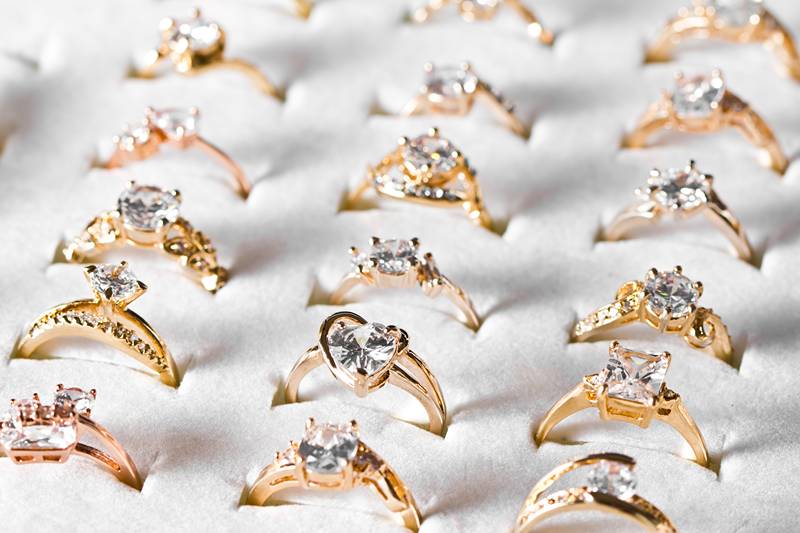
When it comes to selecting the best stone for an engagement ring, gemstone hardness plays a crucial role. Rings are especially vulnerable to knocks, scrapes, and wear and tear, so choosing a stone with a high Mohs hardness rating is essential for longevity.
Diamond remains the most popular choice, thanks to its superior hardness and exceptional brilliance. Sapphire, ranking at 9 on the Mohs scale, is a close second, offering excellent durability and a wide range of colours beyond traditional blue, including pink, yellow, and green. Ruby, also a type of corundum, shares the same level of hardness and adds a bold, romantic feel with its vibrant red hue.
If you’re drawn to more unique stones like opal, tanzanite, or pearl, it’s important to remember that while these gems can be breathtaking, they will require more protection due to their softness. Think bezel settings, occasional wear, and extra care during cleaning and storage.
For more tips on what to consider before purchasing, read Chapelle’s engagement ring buying guide.
From diamond’s legendary durability to the soft elegance of pearl, every gemstone boasts a unique beauty. Now you understand where each of them place on the Mohs hardness scale, you’ll be more equipped to protect and preserve that beauty for years to come. For more advice on how to keep your pieces looking just as brilliant as the day you bought them, visit our care guides page.
Ready to shop? Here
at Chapelle, we have a wide selection of jewellery for all occasions, including bridal
jewellery, fashion
jewellery, and watches, as well as a great range of jewellery gifts. Shop luxury and designer brands like Astra, Calvin Klein, Diamonfire, and Starbust, all with at least 30% off the RRP.
